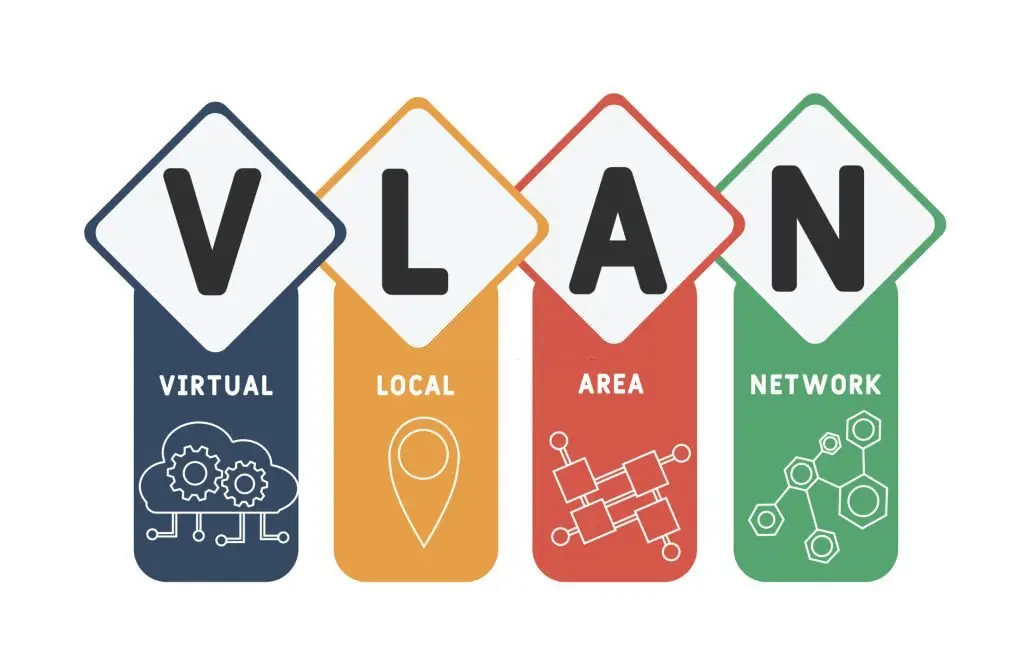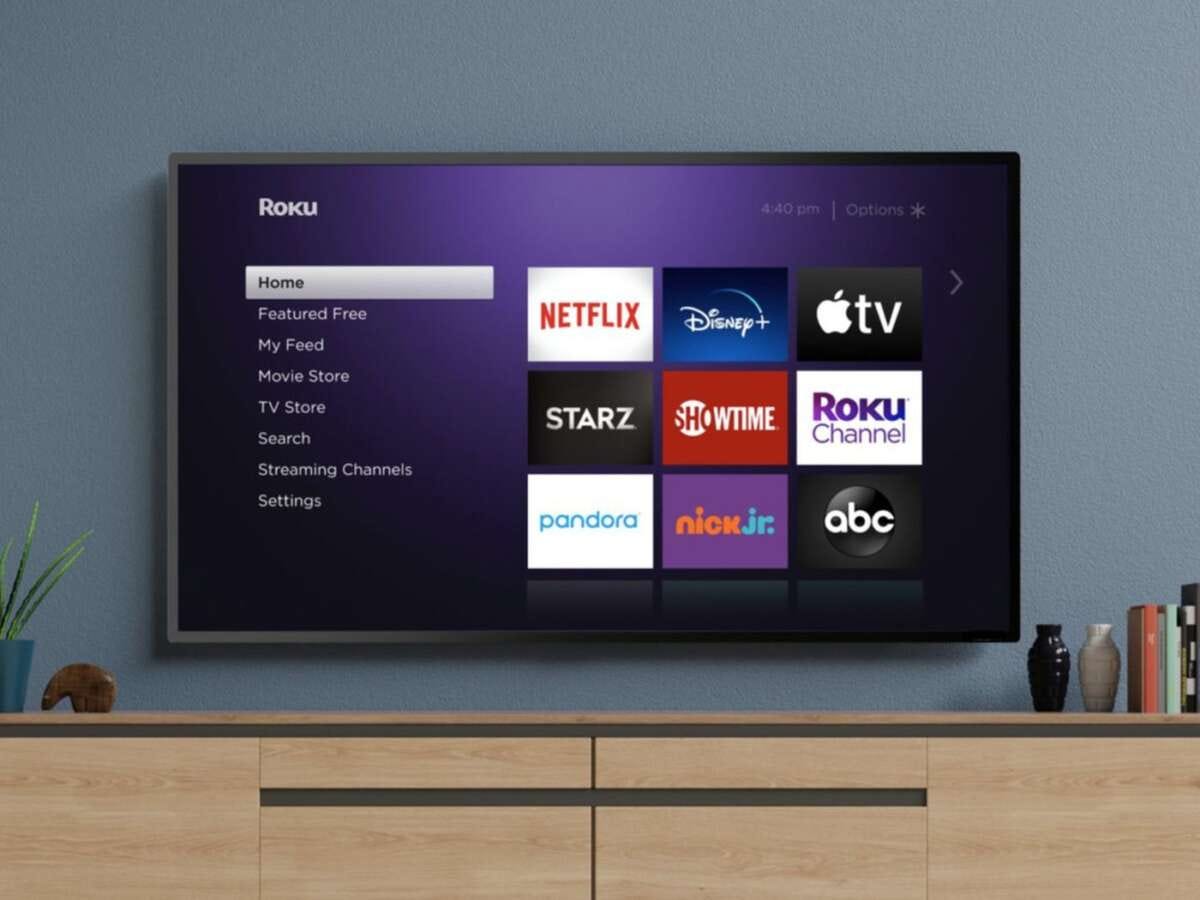
Understanding IPTV and VLAN: A Comprehensive Guide to the Future of Television Broadcasting
admin
- 0
Introduction to IPTV and VLAN
In the changing world of TV broadcast two technologies stand out as big influences: Internet Protocol Television (IPTV) and Virtual Local Area Network (VLAN) This full guide will discuss the details of these technologies and their role in the future of TV broadcast.
IPTV is a new system that sends TV programs over internet protocol (IP) networks. Unlike typical cable or satellite TV, IPTV sends video streams using the internet or a personal network to viewers’ devices. This technology has opened many new options enabling broadcasters to provide lots of content interactive features, and tailored experiences.
VLAN is a technology in networking that allows the division of one physical network into several logical ones. By splitting a network into virtual parts, VLAN provides better security, network performance, and resource use. When used with IPTV, VLAN is essential in delivering content and .
As we go through this guide, we will open up the complex relationship between IPTV and VLAN, their advantages to broadcast TV and the future effects of their union. Buckle up for this trip promises to be a revealing study of the advanced tech causing a revolution in how we watch and share TV content.
Understanding VLAN
Before delving into the synergistic relationship between IPTV and VLAN, lets first understand the concept of VLAN in greater detail.
A VLAN is a logical grouping of devices on a network allowing them to communicate as if they were connected to the same physical network segment regardless of their actual physical location This virtualization of the network infrastructure provides numerous advantages including:
- Enhanced Security: By segmenting the network into logical groups, VLANs isolate traffic and prevent unauthorized access mitigating security risks and potential breaches.
- Improved Network Performance: VLANs reduce broadcast domains minimizing unnecessary network traffic and optimizing bandwidth utilization.
- Scalability and Flexibility: VLANs enable easy network expansion and reconfiguration without the need for physical rewiring providing scalability and flexibility to adapt to changing requirements.
- Cost Savings: By maximizing the use of existing network infrastructure vlns eliminate the need for additional hardware investments resulting in cost savings for organizations.
VLANs operate by assigning unique identifiers (VLAN IDs) to each logical network segment network devices such as switches and routers use these VLAN IDs to determine which traffic belongs to which VLAN and how to handle it accordingly.
How IPTV and VLAN Work Together
The combination of IPTV and VLAN technologies is causing a revolution in the delivery and management of television content here is how these two technologies operate together:
- Segregating IPTV Traffic: VLAN technology lets broadcasters separate IPTV traffic from other network traffic to secure dedicated bandwidth and prioritization for video streams this division improves the total quality of service (QoS) and stops interference from other network activities.
- Secure Content Delivery: By making separate VLANs for IPTV services broadcasters can use strong security measures like access control lists (ACLs) and firewalls to shield sensitive content from unauthorized access or interception.
- Efficient Bandularity Utilization: VLANs allow broadcasters to use bandwidth better by giving dedicated network resources to certain IPTV channels or services this ensures good use of available bandwidth and stops congestion or bottlenecks.
- Scalability and Elasticity: As the need for IPTV services increases VLANs offer the ability to grow the network infrastructure without interrupting current services new IPTV channels or services can be set up by making new VLANs ensuring smooth integration and growth.
By using VLAN technology IPTM broadcasters can deliver top quality video streams ensure safe content delivery and manage network resources well making the overall watching experience better for their subscribers.
Benefits of IPTV and VLAN for Television Broadcasting
The merging of IPTI and VLAN technologies brings several advantages to TV broadcasting causing a revolution in how content is delivered and watched here are some main benefits:
Increased content offerings: IPTV allows broadcasters to offer many channels on demand content and interactive services to meet different viewer tastes and needs.
Personalized Viewing Experiences: IPTV lets viewers have customized content suggestions channel lineups and the options to pause rewind and record live tv making a viewing experience that suits them.
Cost effective distribution: IPTV cuts the need for costly specific structures like cable or satellite networks reducing the costs to run for broadcasters and making viewer subscription fees cheaper.
Enhanced Security and Privacy: by using VLAN technology broadcasters can set up strong security measures to keep sensitive content safe and make sure viewer data remains private building trust and confidence among subscribers.
Efficient Bandwidth Management: VLANs let broadcasters manage bandwidth better making sure videos are delivered and without interruption while reducing network congestion and latency problems.
Scalability and Future proofing: The mix of IPTV and VLAN technologies offers a scalable and future proof option allowing broadcasters to change to growing viewer needs and new technological changes.
By using the combined strengths of IPTV and VLAN television broadcasters can lead the market. They provide better viewing experiences use resources well and prepare for lasting success in the fast changing media.
IPTV and VLAN in the Future of Television Broadcasting
As we consider the future of TV broadcasting, combining IPTV and VLAN technologies will have a major part in forming the industrys course Here are some important trends and changes to watch:
- Convergence of Services: IPTV and VLAN will make it easy for people to use both traditional TV and streaming services together Viewers will be able to get all kinds of shows from different places using one simple screen.
- Advanced Interactivity: With IPTVs two way communication broadcasters will give more interactive features Viewers can enjoy things like live interactions ads meant just for them and deep experiences with virtual and augmented reality.
- Cloud based Broadcasting: Using cloud computing will cause a revolution in how IPTV and VLAN services work. Broadcasters will use the clouds ability to scale adapt and save costs for sharing content and managing networks.
- 5G and Beyond: The introduction of 5G technology and upcoming wireless generations will boost the abilities of IPTV and VLAN They will allow smooth streaming of good quality video content on-the-go creating new apps and uses.
- Artificial Intelligence and Machine Learning: AI and ML have a significant influence on the improvement of IPTV and VLAN networks they enable smart content suggestions predictive bandwidth allocating, and active network managing to better viewer experiences.
As these trends develop the combination of IPTV and VLAN will keep changing giving broadcasters new chances to create connect with viewers and remain leading in the tough media world.
IPTV/VLAN Deco: Exploring the Integration of IPTV and VLAN
In the area of IPTV and VLAN combination, a new idea has surfaced: IPTV/VLAN Deco. This modern method merges the abilities of IPTV and VLAN tech with better managing and watching of networks giving broadcasters a full way to make their work easier and improve what viewers watch.
IPTV/VLAN Deco is a specialized tool for managing networks made to make setting up arranging and watching IPTV and VLAN networks easier It has a main interface to manage different parts of the broadcast setup including:
- Network Topology Management: IPTV/VLAN Deco helps broadcasters see and control the whole network design, including IPTV servers, VLAN setups, and network devices ensuring efficient resource use and smooth operations.
- VLAN Configuration and Automation: With IPTV/VLAN Deco, broadcasters can set up change and automate VLAN setups securing smooth connections with IPTV services and reducing the need for hands on work.
- Bandwidth Optimization: The platform uses advanced algorithms and machine learning methods to check network traffic shapes and manage bandwidth use securing top quality video transmission while reducing network traffic jams.
- Monitoring and Reporting: IPTV/VLAN Deco has capabilities to monitor and to report in real time It lets broadcasters watch network activity find potential issues and make actions to resolve them in advance before they disrupt viewer experiences.
- Scalability and Flexibility: IPTV/VLAN Deco provides a scalable and flexible system as broadcasting needs change they allow broadcasters to add new technologies services and network elements without disturbing ongoing operations.
By using IPTV/VLAN Deco, broadcasters can simplify their operations optimize the use of resources and provide better viewing experiences to their audiences staying ahead in the competitive media landscape.
Setting up IPTV and VLAN in Your Broadcasting Network
Setting up IPTV and VLAN technologies in your broadcasting network might look difficult, but with correct planning and carrying out, the process can be smooth and effective. Here are the essential steps to set up IPTv/vIan and VLAN in your broadcasting network:
- Network Assessment: Start by checking your current network setup, which includes hardware software and ability to handle data. This check will help find any limits and decide what needs to change or improve to handle IPTV and VLAN technologies.
- VLAN Design and Configuration: Using your network check, create and set up the VLAN structure that meets your broadcasting needs. This includes deciding how many VLANs are needed setting VLAN IDs and making network tools like switches and routers ready to handle VLAN segmentation.
- IPTV Infrastructure Setup: Install the needed IPTV infrastructure such as video servers, encoders, and middleware parts Make sure these parts work well together and connect with your VLAN setup to deliver content and .
- Network Security Implementation: Put in place strict security measures to keep your IPTV and VLAN infrastructure safe This may require setting up firewalls access control lists (ACLs) and encryption protocols to protect sensitive content and stop unauthorized access.
- Quality of Service (QoS) Configuration: Adjust QoS settings on your network devices to give priority to IPTV traffic and allow smooth video streaming. This might include creating traffic shaping packet prioritization, and bandwidth reservation systems.
- Testing and Monitoring: Do complete tests and watch your IPTV and VLAN setup to find and fix any possible problems before starting. Use monitoring tools and processes to always keep an eye on network workings and how viewers find the quality.
- Documentation and Training: Keep detailed records of your IPTC and VLAN setup including pictures of the network, details on the settings, and guides to fix problems. Train your technical team to make sure they know and can handle and keep up the system well.
- Ongoing Maintenance and Optimization: Keep watching and improving your IPTV and VLAN setup to meet changing broadcasting needs new technologies, and changing viewer wants Always check and renew your network setups safety actions and QoS settings to keep the best performance.
By adhering to these steps and utilizing the skills of skilled experts, you can put into practice IPTV and VLAN technologies in your broadcasting network opening up new opportunities to provide high quality content and to improve viewer experiences.
Common Challenges and Solutions in Implementing IPTV and VLAN
While combining IPTV and VLAN technologies gives many advantages broadcasters might face different challenges when putting them into action and during operation. Here are some usual challenges and possible fixes:
- Network Congestion and Bandwidth Limitations:
– Challenge: High quality video streams use a lot of bandwidth and can lead to network congestion and poor viewing experiences.
– Solution: Use effective bandwidth management techniques like traffic shaping prioritizing and reserving bandwidth also think about updating network infrastructure or using content delivery networks (CDNs) to handle traffic better and enhance performance. - Multicast Routing Complexities:
– Challenge: IPTV often depends on multicast routing protocols which are hard to set up and control in big networks.
- Solution: Use better network management tools and automation systems to make multicast setup and checks simpler Also give full training to network admins to make them good at multicast routing rules.
- Security Vulnerabilities:
- Challenge: IPTV and VLAN setups may face different security issues such as unwanted entry content theft and cyber attacks.
- Solution: Put in place strong security steps including firewalls coding rules, and entry control setups Always refresh security plans and do risk checks to find and reduce possible dangers.
- Interoperability and Compatibility Issues:
- Challenge: Mixing IPTV and VLAN technologies with current network setups and external components might cause issues with working together and compatibility.
- Solution: Test and confirm that IPTV and VLAN systems work with current systems in the phases of planning and carrying out the project work with vendors and adhere to industry standards to make integration smooth.
- Scalability and Future proofing:
- Challenge: As the needs of viewers grow and technology gets better, broadcasters need to make sure their IPTV and VLAN systems can grow and adjust to what the future might bring.
Solution: Use a modular and adjustable method to integrate IPTV and VLAN allowing simple addition of new technologies and another services also renew and refresh infrastructure and software elements to keep them compatible with new standards and protocols.
By addressing challenges and implementing good solutions, broadcasters can overpass obstacles and ensure a successful sustainable use of IPTV and VLAN technologies in their networks.
Explore the future of TV broadcasting by looking into our advanced IPTV and VLAN solutions our expert team is committed to aiding you in understanding the complexities of these technologies and unlocking their complete capabilities contact us now to set up a consultation and start your journey to provide unrivaled viewing experiences for your viewers.
Conclusion: Embracing the Future of Television Broadcasting with IPTV and VLAN
As we finish this detailed guide it is clear that the use of IPTV and VLAN technologies is set to cause a revolution in the television broadcasting industry. By using the strength of these technologies broadcasters can provide high quality content improve viewer experiences make better use of resources and secure their operations for the future.
The association between IPTV and VLAN gives many advantages such as more content options viewing experiences that meet viewers specific likes cost effective sharing better security and privacy better management of bandwidth and the ability to grow in the future. Also innovative tools like IPTV/VLAN Deco give broadcasters a full platform to make network management and monitoring easier adding to the improvement of their operations.
While putting into practice IPTV and VLAN technologies may bring about problems such as a busy network complex multicast routing open security risks issues with working together and growth worries early planning and using best methods can help broadcasters face these problems and attain a good merger.
As the media world keeps changing, getting ready to handle the next phase of television broadcasting with IPTV and VLAN technologies will be important for broadcasters to remain in the game meet the shifting needs of viewers and open new doors for rising and being original.
By using the skills of knowledgeable workers and keeping up with the biggest recent changes in IPTV and VLAN technologies, broadcasters can place themselves at the leading edge of the business providing great viewing experiences and making new benchmarks for television broadcasting.

